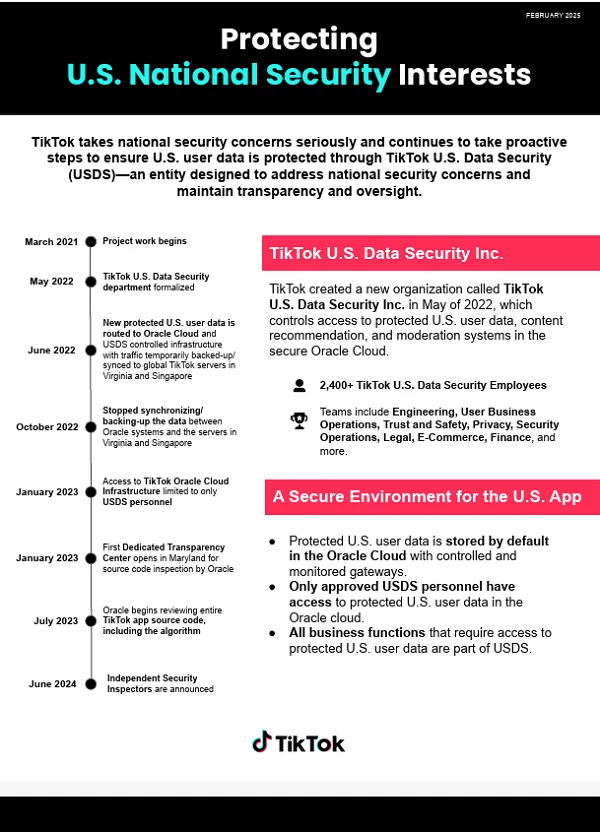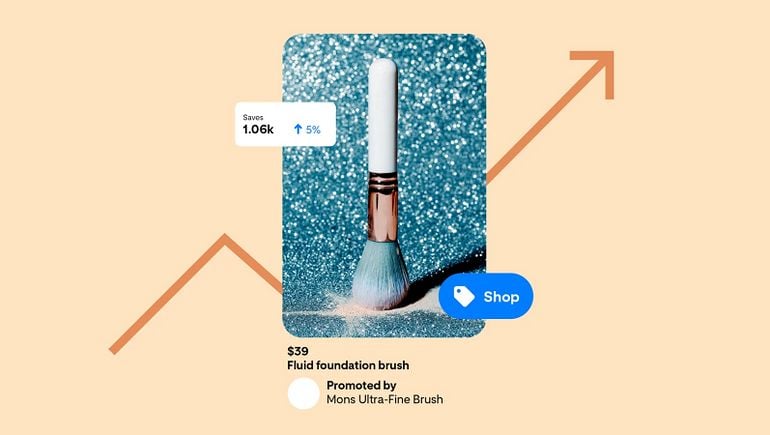Amid ongoing concerns about its links to the Chinese Government, and its alleged national security risk in the U.S., TikTok has published a new overview of the various measures that it’s undertaken to ensure that U.S. user data remains separate, and that TikTok operates without CCP influence.
Which may be true, but then again, previous reports have indicated that TikTok’s not always 100% clear on these links.
TikTok, which is currently, technically banned in the U.S., based on the passing of the Biden-approved “Protecting Americans from Foreign Adversary Controlled Applications Act”, is engaged in negotiations with both the Trump Administration and the Chinese Government, as it seeks to remain in the U.S., and in contact with its 170 million U.S. users.
President Trump has granted TikTok an additional 75 days to negotiate a new sell-off deal, via an Executive Order, though both Google and Apple have opted not to support the app in their app stores for fear of potential legal penalties at a later stage. Oracle, meanwhile, which supports the day-to-day operations of the app, is operating under Trump’s advice, which means that TikTok still works in the U.S., but it can’t add any new users.
Unless they use workarounds, which TikTok is also advising them to do. But again, technically, TikTok is banned in America, which is why it‘s still trying to convince U.S. users, and importantly, U.S. senators, that it’s totally safe, in order to secure its future.
In its latest statement in response to speculation, TikTok says that:
“The facts are clear: TikTok has gone further than any other platform in protecting U.S. user data.”
TikTok says that:
- In 2022, it established the TikTok U.S. Data Security Inc. subsidiary, through which it has implemented various technical safeguards to address national security concerns, while enhancing transparency.
- Protected U.S. user data is stored in the Oracle Cloud, with controlled and monitored gateways that only approved USDS personnel have access to.
- It provides dedicated Transparency Centers where trusted third parties, such as Oracle and independent security inspectors, can manually inspect TikTok’s source code and algorithms.
- Oracle has conducted ongoing analysis of TikTok’s platform, and has found no issues with the systems.

As TikTok further notes:
“Over the past two years, we have provided unprecedented transparency by opening our systems to independent third-party audits and oversight. This proactive approach sets a new benchmark for accountability and compliance.”
So TikTok’s safe, right? All of these measures improve transparency and safety, and all of TikTok’s systems are locked down to outsiders, meaning there’s no risk of CCP operatives stealing U.S. user data.
Right?
That may be true, though as noted, back in 2023, after repeatedly offering similar assurances, TikTok CEO Shou Zi Chew admitted under oath that Chinese staff could still access some U.S. user data.
Within the same Senate hearing, Chew told Senators that TikTok “has never, and would never, share U.S. user data with the Chinese government.” Though, technically, it would have to, under China’s cybersecurity laws, which stipulate that CCP operatives can request such data at any time, and if it’s available on ByteDance’s Chinese servers, they would have little choice.
As such, you can see how these two statements conflict when considering data protections.
To be fair, Chew did also note that China-based staff would no longer be able to access U.S. user information once “Project Texas”, its billion-dollar U.S. data separation project, was complete. But then again, just last year, The Wall Street Journal reported that TikTok was still providing U.S. user data to staff at ByteDance, its Chinese parent company.
So again, TikTok hasn’t always been 100% clear on what exactly its data separation measures mean in practice at any given time.
While at the same time, it’s possible that data access is not the key security concern around the app, with some reports speculating that the opportunity to use TikTok as a vehicle for pro-CCP propaganda is just as significant a security issue for U.S. officials.
For years, CCP-supported operatives have been using virtually every Western social media app to seed pro-China narratives, by using pages and profiles to distribute real news and information in order to build an audience, then injecting politically-aligned, pro-CCP messages into the mix.
In 2022, for example, Google disrupted over 50,000 instances of a Chinese influence program called “Dragonbridge” across YouTube, Blogger, and AdSense, while Meta has also detected many instances of Chinese influence operations, with the company removing almost 5,000 Facebook profiles linked to one such program in a single quarter in 2023. More recently, Microsoft has warned that it’s found various Chinese-based groups seeking to influence voters in other nations, including the U.S., through coordinated social media activity.
Given that China-based groups are undertaking these activities in other apps, it stands to reason that TikTok, a Chinese-owned platform, over which they would have significantly more influence, would also be a key vector for the same, while it would also be almost impossible to detect, given the personalization and customization of TikTok’s advanced matching algorithms. What you see in TikTok is very different to what I’m shown, and it could be that the CCP is indeed working with TikTok to influence such on a broad scale.
But we don’t know, because cybersecurity officials have remained tight-lipped about the actual details that have led to their advice against the app. But it is worth noting that the U.S. TikTok sell-off bill was passed by a cumulative vote of 431 to 83 across the House and the Senate, which means that the vast majority of senators, Republican and Democrat, held grave concerns about the app following their own, top secret briefings on such.
Canadian officials are also trying to push TikTok out of Canada, while various other regions are also still reviewing the threat posed by the app.
So while TikTok users are keen to have the app remain in the U.S., and are opposed to a ban, there does seem to be more to it than we’re being told. And it may extend beyond the safety of U.S. user data.
Which is what TikTok’s focusing on in its latest statements, though maybe, that’s not it.














